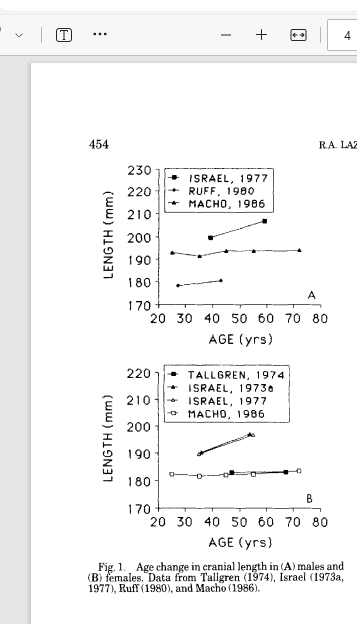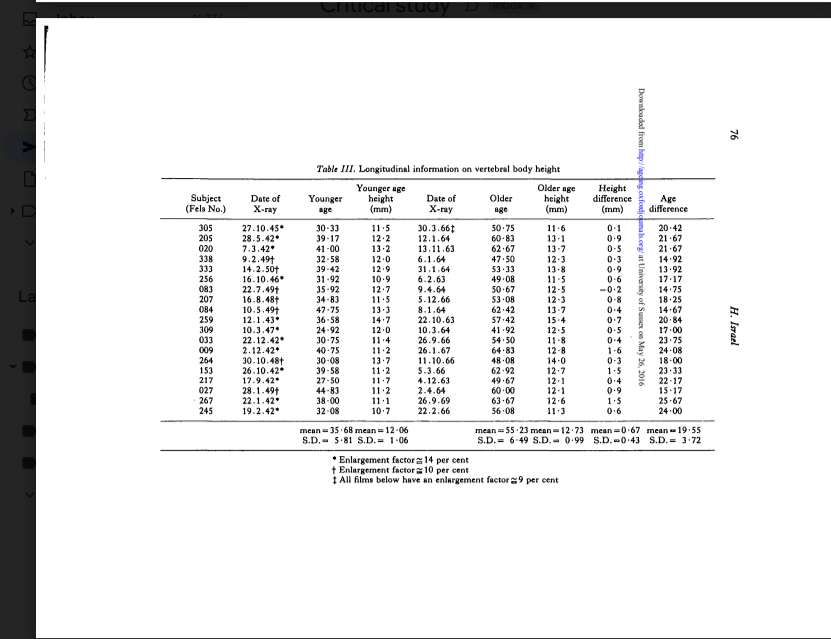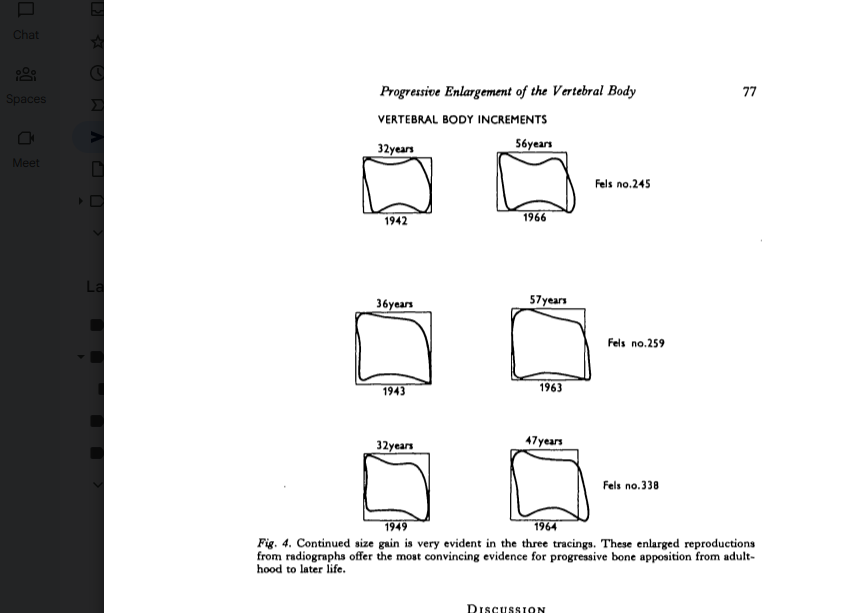Continuing Periosteal Apposition I: Documentation, Hypotheses, and Interpretation
“This paper reviews 42 studies published since 1964 that have found both significant and nonsignificant
age-related change in various skeletal size dimensions, e.g., length, diameter, width, and area”
“Continuing periosteal apposition (CPA) of lamellar bone in adulthood leads to greater skeletal dimensions in older individuals.”
The paper mentions several citations that show changes in skull shape with age including length of skeletal elements. If skull bones can increase in length it is possible that other bones could increase in length too.

This review paper mentions a Harry Isreal paper as showing that the vertebral body can increase in height past skeletal maturity:
PROGRESSIVE ENLARGEMENT OF THE VERTEBRAL BODY AS PART OF THE PROCESS OF HUMAN SKELETAL AGEING
“Both longitudinal and cross-sectional evaluation of the body of the third cervical vertebra reveal
that age-associated continuing enlargement occurs in women through adulthood and into the later
years.“<-this is exciting stuff as it means it is possible to gain torso height and it could explain the height gain in pregnancy.

So only one person did not have a age related vertebral body height increase. And amazingly this was a longitudinal study with some people well past their twenties.

This is the third cervical vertebrae
third cervical vertebra, occurs on an ageing basis among adults.“!!!!<-very exciting.
The paper Continuing growth in sella turcica with age also looks promising as Sell Turcica is a bone but I could not get the paper.
Here’s another one of the papers mentioned that measured length:
Sex Differences in Age-Related Remodeling of the Femur and Tibia
“In a previous study of a preindustrial sample with high activity levels, both men and women exhibited bone subperiosteal expansion and increase in second moments of area with aging.”
“In preliminary analyses of the data, we found that there was a significant negative trend in femoral and
tibial length with age, particularly among men, where bone length decreased 34 mm per decade on
average”<-if bone length can decrease it is possible that it can increase.
